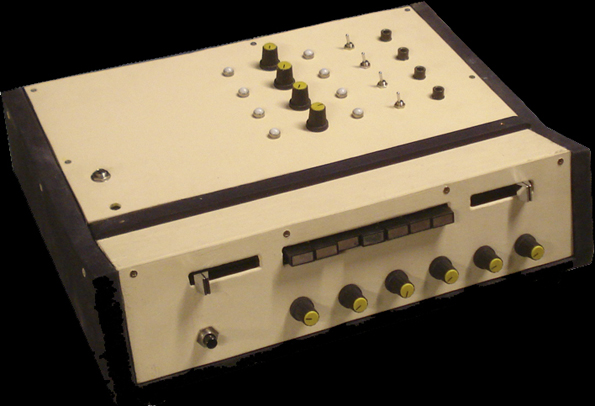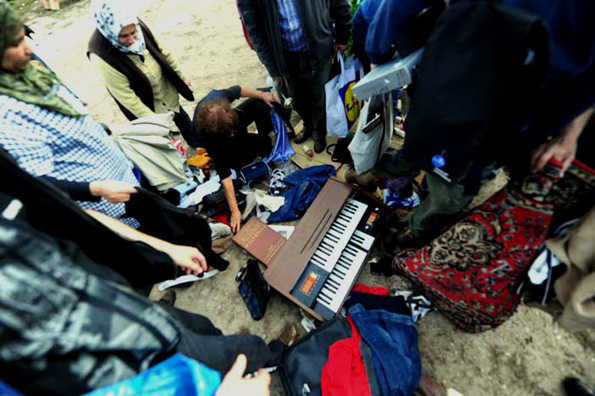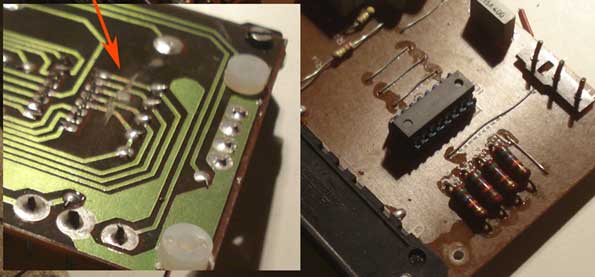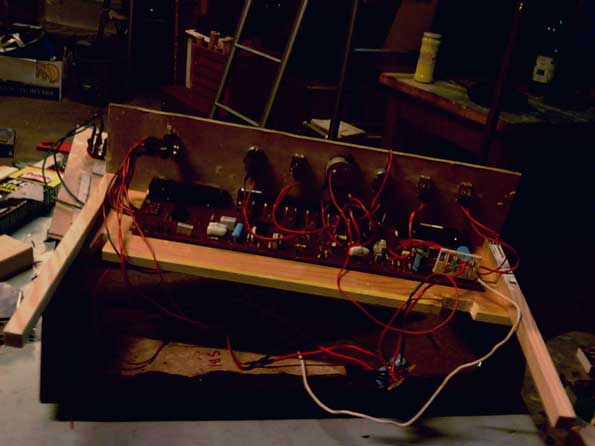As soon as I have brought home the instrument I open it, glad to see, that the rhythmsection has its own pcb and works as a single module. I decide to separate the rhythm section and to transform it into a standalone analogue drummodule.
I also want to have possibility to alter the drum sounds. This is very easy done. There already are three trimmers on the board. The first affects the volume and pitch of the kickdrum, the second is changing the frequency of a lowpassfilter that is passing the noise for the snaredrum. The third one is controlling the volume of a click used for the attack of the snare drum. I replace these three trimmers with potentiometers and then go looking for other points that change something. I can find the volume for the snare drum and the volume and the pitch for the woodblock sound. So I add three more potentiometers.
The next step is to have access to the points where the sounds of the drum machine are triggered. I want to program patterns beyond walz and march by an external sequencer. The only chip on the board is the candidate for further investigations. This chip MM5871 is a rhythm pattern generator. A look on the datasheet show me the pins for the triggers.
I have to disable the trigger signals comming from this chip so that the machine is quiet and ready to receive the external trigger signals. I do this by cutting the traces on the pcb between the chip and the resistors connected to the trigger pins of the chip. Then I take a switch that can handle 4 signals at once and that can select between two different inputs. The switch connects on either side of the cutted traces on the pcb.
I can now switch between the internal signal and an input socket, I can switch between normal preset mode and external triggering.nd free mode.


























